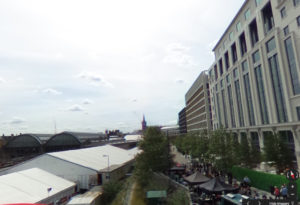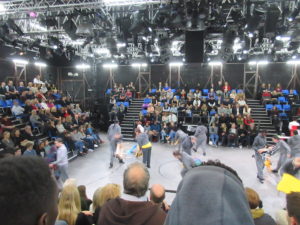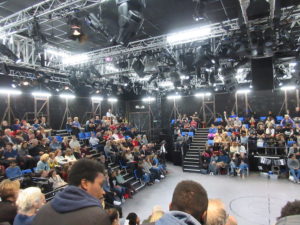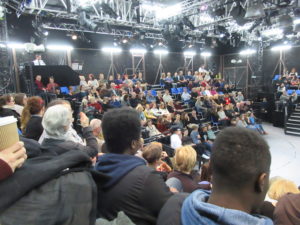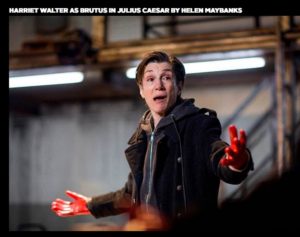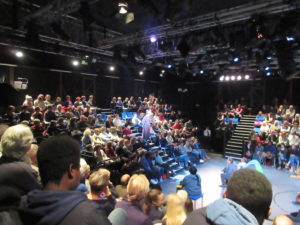post 8 Innovative Performance – Innovative Space
It was well worthwhile wondering out in the dark, the cold and the damp to this chaotic area in the making, adjacent to refurbished railway stations in central London to see a Shakespeare play.
There were two innovative features of Shakespeare’s Henry IV at the King’s Cross theatre:
first an all female cast
https://www.kingscrosstheatre.com/whats-on/shakespeare-trilogy
second in a temporary theatre on a site awaiting development.
Cross gender casting was customary during Shakespeare’s time when all actors were male, so why should it be shocking to watch an all female cast playing Shakespeare centuries later? Cross gender casting has taken on in London with women playing Hamlet and King Lear and more to come.
Performing this production of the play in a temporary structure erected on a building site earmarked for development, gradually turning this enormous railway land into a new district is another innovative feature. What a great idea to use such a site for cultural purposes and avoid planning blight at the same time. It would be even more creative if the ground floor of this site would be turned into permanent theatre spaces while other uses could be put on top in this dense, high rise, new quarter.
Not everybody may have appreciated the succinct shell which housed the play and not everybody may have agreed with cross gender casting. The temporary theatres – four separate stages in different shapes, one in a round, one two sided, and two traditional seating oriented toward a box stage – were managed to attract new young theatre audiences. When I attended the public consisted mainly of either young or grey patrons.
This version of Henry IV was played without an interval with Harriet Walter in the main role and a large cast of mixed black, Asian and white women in all shapes and sizes talking in diverse accents in the other parts.
The play takes place in a prison, the set at the centre of the seating in a round was sparse, made up of a few symbolic items, and the costumes were prison clothes with the odd dressing gowns and crowns to mark status. Words alternated with dance, mime and song, and some passages referred to contemporary times. Phyllida Lloyd’s production had attracted a full house and managed to keep even the attention of the youngsters for long stretches away from their smart phones.

